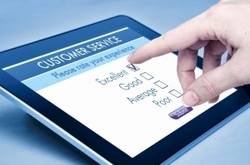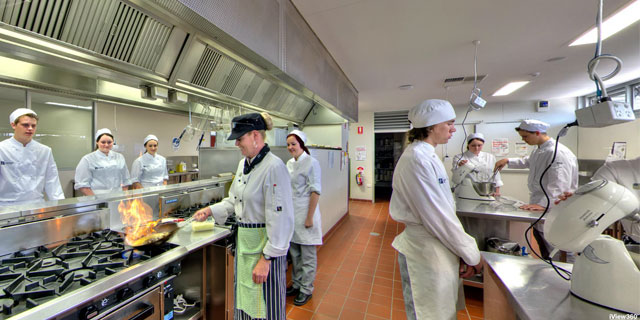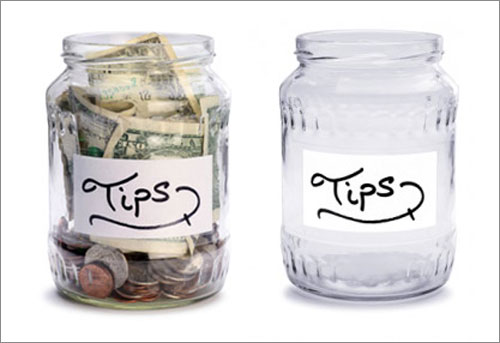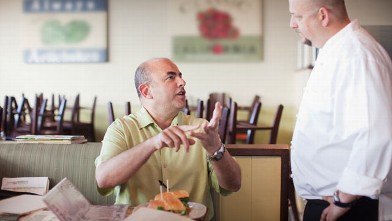
Technology is changing the hospitality industry. How can your business benefit?
Online ordering
Online ordering is one piece of technology that is becoming increasingly popular. Customers appreciate the convenience of being able to order outside of business hours or when they can't get to a phone.
As a restaurant or cafe owner you can choose a third party online booking service or develop one that's customised to your needs. Investigate each option to see which works better for your business.
Regardless of which option you choose, the key is to make online ordering easy with a website that is easy to navigate. Make sure your website is mobile friendly as well. Not only are more people ordering online but they are doing it via their smartphones.
As a restaurant or cafe owner you can choose a third party online booking service or develop one that's customised to your needs. Investigate each option to see which works better for your business.
Regardless of which option you choose, the key is to make online ordering easy with a website that is easy to navigate. Make sure your website is mobile friendly as well. Not only are more people ordering online but they are doing it via their smartphones.
Social media
The importance of social media to the hospitality industry only seems to be strengthening. Social media has democratised which restaurants and cafes get noticed. Most restaurants and cafes are run by small business owners who should embrace social media as a low cost tool for building awareness and getting customers through the door.
When deciding what social media platforms you should have a presence on, consider your target customer and where they spend most of their time.
Explore sites like Facebook and Foursquare which allow diners to check-in to your restaurant or cafe.
Review sites like Yelp and Urban Spoon are a great way to monitor feedback of your customers and make any necessary improvements.
One Increasingly popular piece of social media technology in the US is Facebook ordering. Sites like Net Waiter can add this function to your site. It's low cost and has the potential to grow sales.
No matter what social media platform you choose, creating compelling content and interacting is they key to ensure engagement with your existing customers and attracting new ones
When deciding what social media platforms you should have a presence on, consider your target customer and where they spend most of their time.
Explore sites like Facebook and Foursquare which allow diners to check-in to your restaurant or cafe.
Review sites like Yelp and Urban Spoon are a great way to monitor feedback of your customers and make any necessary improvements.
One Increasingly popular piece of social media technology in the US is Facebook ordering. Sites like Net Waiter can add this function to your site. It's low cost and has the potential to grow sales.
No matter what social media platform you choose, creating compelling content and interacting is they key to ensure engagement with your existing customers and attracting new ones
E-Waiter
The use of tablets is becoming more prevalent in restaurants and cafes because of the potential efficiencies they offer. The use of tablets means diners can order and pay for their meals quicker and your business can serve more people.
Some restaurants have found they are able to reduce their wage bill as they do not need the same amount of staff to serve the same amount of customers.
Not only is the use of tablets more efficient but it can improve customer service. Customers appreciate efficient service and the added benefits like the ability to ensuring their credit card is always in view when paying at the table.
Some restaurants have found they are able to reduce their wage bill as they do not need the same amount of staff to serve the same amount of customers.
Not only is the use of tablets more efficient but it can improve customer service. Customers appreciate efficient service and the added benefits like the ability to ensuring their credit card is always in view when paying at the table.
CRM
Customer Relationship Management (CRM) is a system for organising your ongoing relationships with customers and ensuring important information is stored. There are many CRM tools on the market that are constantly being updated and readily cater for the the hospitality industry.
A CRM tool should enable you to access details such as:
1. Customer contact details
2. Frequency of visits
3. Meal preferences
4. Average spend per visit
You can then use the information provided by your CRM system to tailor customer promotions. This will ensure the you are not only encouraging repeat business but increasing the profitability of each visit also.
A CRM tool should enable you to access details such as:
1. Customer contact details
2. Frequency of visits
3. Meal preferences
4. Average spend per visit
You can then use the information provided by your CRM system to tailor customer promotions. This will ensure the you are not only encouraging repeat business but increasing the profitability of each visit also.
Electronic POS
Electronic POS systems are making the humble cash register redundant. They allow restaurants and cafes to operate more efficiently and provide better customer service. When integrated with a CRM tool they provide a wealth of data on your business.
Here are just a number of things that a POS system can record and measure for your business:
Here are just a number of things that a POS system can record and measure for your business:
- The popularity of menu items
- Busiest days
- Busiest time of days
- An overview of your business revenue
- Makes bookkeeping, BAS lodgement and tax returns hassle free







 RSS Feed
RSS Feed